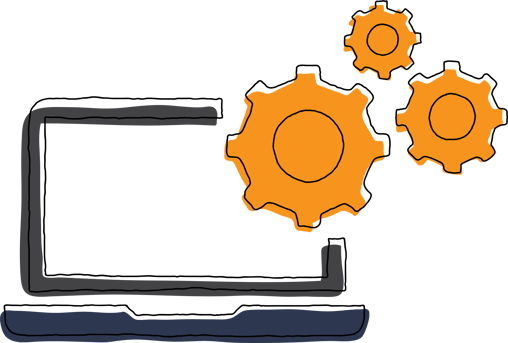Creating a Successful B2B Smarketing Strategy with HubSpot
In today's fast-paced and competitive business world, developing an effective B2B Smarketing strategy is essential for driving growth and staying ahead of the competition. Smarketing, a term coined by HubSpot, refers to the alignment of sales and marketing efforts to achieve common goals and drive revenue.
How can HubSpot Help with Your B2B Sales and Marketing Strategy?
HubSpot is a powerful tool that can help businesses create a successful B2B Smarketing strategy. In this blog post, we'll explore how businesses can leverage HubSpot to align their sales and marketing efforts and achieve better results.
1. Define Your Buyer Persona
The first step in developing a successful Smarketing strategy is to define your buyer persona. A buyer persona is a fictional representation of your ideal customer, based on market research and real data about your existing customers.
HubSpot provides a variety of tools to help businesses define their buyer personas, including the HubSpot CRM, which allows you to track and analyze your customer data, and the HubSpot Persona tool, which guides you through the process of creating a detailed persona profile.

2. Create a Content Strategy
Once you have defined your buyer persona, the next step is to create a content strategy that speaks to their needs and interests. HubSpot offers a variety of tools to help businesses create a successful content strategy, including the HubSpot Blogging tool, which allows you to create and publish blog posts, and the HubSpot Social Media tool, which allows you to schedule and publish social media posts according to your content calendar.
In addition to creating content, businesses can also leverage HubSpot to track the performance of their content and optimize it for better results in their target market. HubSpot's Content Strategy tool provides valuable insights into how your content is performing, allowing you to make data-driven decisions about what content to create and how to promote it.

3. Nurture Leads with Marketing Automation
One of the key benefits of using HubSpot for B2B Smarketing is the ability to automate your marketing efforts. HubSpot's Marketing Automation tool allows businesses to create targeted, personalized email campaigns that nurture leads through the sales funnel.
With HubSpot, businesses can create automated workflows that send targeted emails based on a lead's behavior and interests. For example, if a lead downloads a whitepaper on a specific topic, you can set up an automated workflow that sends them related content and offers.

4. Manage Your Sales Pipeline
Finally, HubSpot provides a powerful CRM tool that allows businesses to manage their sales pipeline and track their sales activities. With the HubSpot CRM, businesses can track leads and deals, create custom reports, and manage their sales team's activities.
The CRM also integrates with other HubSpot tools, such as the Marketing Automation tool and the Sales Hub, allowing businesses to align their sales and marketing efforts for better results.
In conclusion, developing a successful B2B Smarketing strategy requires businesses to align their sales and marketing efforts to achieve common goals. By leveraging the powerful tools and features offered by HubSpot, businesses can create targeted content, nurture leads, automate their marketing efforts, and manage their sales pipeline for better results. With HubSpot, businesses can take their Smarketing strategy to the next level and drive growth and revenue.
.png)